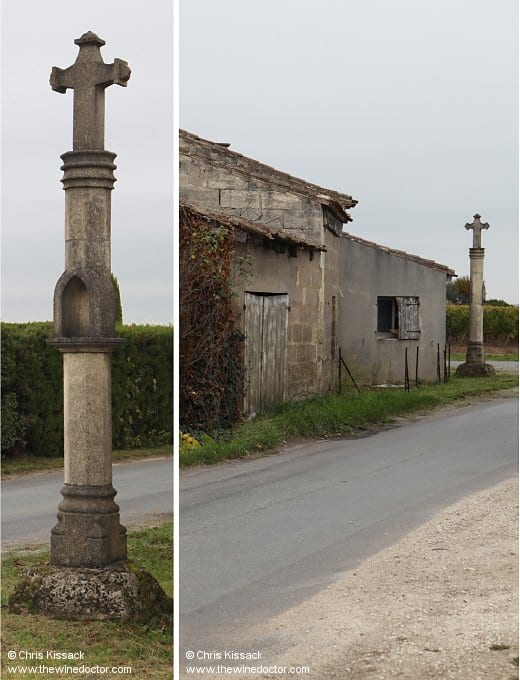Château Vray Croix de Gay
Château Vraye Croix de Gay (as it was originally spelt, vraye changing to vray much later) first appears in Cocks et Féret in editions published in the early 20th century. In the 1922 edition this estate appears in the second tier of premiers crus in the region, just beneath Château La Croix de Gay, which at the time was in the hands of Jean-Marie Joseph Barraud (1854 – 1951). The two vineyards faced one another from opposite sides of the Route de Saint-Jacques-de-Compostelle, one of several paths followed by pilgrims as they made their way through the region. The focus for the two domaines was the cross, the Croix de Gay, which stood at the roadside to guide the pilgrims on their way. The proprietor of Château Vraye Croix de Gay was a man named Pommier, a small-time vigneron who made wine on the side, as his main trade was as a boulanger.
It is reported by some, most recently by Neal Martin writing in Pomerol (Wine Journal Publishing, 2012), that the name Vraye Croix de Gay (vraye meaning real) came about as a result of a dispute between the two proprietors. Despite the fact that the cross was in the ownership of Charles Pommier, Jean-Marie Barraud registered the name Croix de Gay with the local authorities. His was the larger of the two estates, turning out 20 tonneaux per annum compared to Pommier’s 5 tonneaux, and so perhaps he thought the name was rightfully his. It seems he also believed he should own the cross as well, so he made overtures towards his neighbour to see if he could buy it. Pommier was having none of it though, and he refused to sell. Indignant, he christened his estate Château Vraye Croix de Gay, declaring himself the real owner of the cross.

